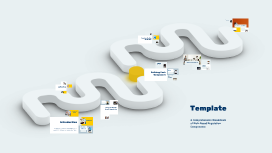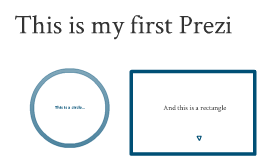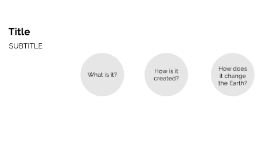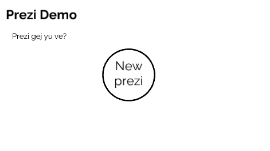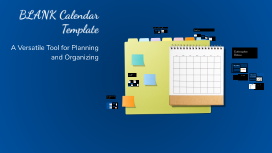BLANK Calendar Template
Transcript: BLANK Calendar Template Introduction to Calendar Templates Conclusion Purpose of a Blank Calendar Benefits of Using a Calendar The primary purpose of a blank calendar is to provide a structured format for tracking dates, appointments, and important events. This allows users to visualize their time management, making it easier to prioritize tasks effectively. Using a calendar improves organization, increases productivity, and helps individuals meet deadlines. It encourages goal setting and enhances time awareness, which is crucial for both personal and professional success. Summary of Key Points A blank calendar template serves as an essential tool for organizing tasks, managing time, and tracking goals. Its adaptability allows for personalized scheduling strategies catering to individual needs and preferences. Encouragement to Get Started Embracing a calendar template can lead to better organization and efficiency. Start by assessing personal scheduling needs and choosing a suitable template to establish a productive routine. Resources for Further Learning Numerous online resources provide free calendar templates, tutorials, and planning strategies. Websites offer downloadable formats for customizable templates, ensuring that users can always find the right fit for their organizational needs. A Versatile Tool for Planning and Organizing Customization Options Color Schemes Selecting appropriate color schemes can improve readability and visual appeal. Use contrasting colors for important dates and events, ensuring they stand out against the background. Types of Calendar Templates Adding Events and Reminders Layout Designs Different layouts serve various needs. Choose between grid formats, list views, or unique patterns to optimize space and functionality based on how you plan to use the calendar. Integrating events and reminders transforms a simple calendar into a dynamic planning tool. Utilize boxes or colors to highlight significant dates, enhancing organization and ensuring nothing is overlooked. Monthly Calendar Weekly Calendar Monthly calendars provide a comprehensive view of the entire month, making it easier to plan events and keep track of appointments. They typically allow for significant detail, with space to jot down important dates and reminders for each day. Weekly calendars display seven days at a glance and are ideal for detailed day-to-day planning. They help users allocate time for tasks and meetings effectively, encouraging better time management strategies. Yearly Calendar Daily Calendar Yearly calendars provide a broad overview of the entire year, perfect for long-term planning. They facilitate tracking of holidays, anniversaries, and major events, providing a quick reference for future planning. Daily calendars focus on a single day, offering ample space for noting down appointments, tasks, and priorities. Their detailed layouts assist in hour-by-hour scheduling, making them ideal for busy professionals. Formatting Tips Effective formatting can enhance clarity and usability. Consider font choices, sizes, and spacing to improve readability, making it easier to track tasks and appointments at a glance. How to Use a Blank Calendar Planning and Goal Setting Time Management Strategies Using a blank calendar for planning encourages the identification of short-term and long-term goals. By marking deadlines and milestones, individuals can visualize their progress and remain focused on their objectives. Implementing a calendar promotes effective time management by utilizing techniques such as time blocking. This method allocates specific time slots for tasks, preventing procrastination and enhancing efficiency. Tracking Milestones Reviewing Progress A blank calendar allows for systematic tracking of milestones in projects or personal goals. By visually marking achievements, users can maintain motivation and ensure they stay on course throughout the process. Regularly reviewing progress on a blank calendar provides insight into what strategies are effective. This reflection enables adjustments to be made, ensuring continual improvement and alignment with set goals.







